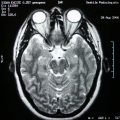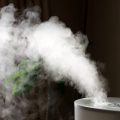Table of Contents
Just like any other adults, a common cold or any other upper respiratory infection could start up your sinus infection. A virus could well trigger around 90% of the acute sinus infection. You need to have sinus drainage to remove some bad effects of this infections, some other symptoms might include sinus pressure, stuffy nose, sore throat, headache, and lethargy are some things that could bother your life. Sinus drainage could help you ease up your life and would make your life and breathing easier. This article will help you on your journey for sinus drainage. We will give you relevant information that would help you manage the infection itself.
What is Sinus Drainage?
Irrigation of the infected sinus or any other part within the bone structure of the face using saline is a procedure called sinus drainage. A metal tube is inserted in the bony and thin sinus wall in your nose which spurts the fluid inside. This sinus drainage is usually done as an outpatient procedure. There is a special procedures room in the hospital for drain sinus. It only takes less than 30 minutes to have your sinus drainage, aside from this, you will also use a local anesthetic. For children and adult’s sinus drainage, some might even give general anesthetic. However, this procedure is not performed for toddlers aging below 3 because the sinuses are still very small.
Your sinuses could be found on either side of your nose. This air-filled organ is important for your voice quality. In a normal instance, the fluid will be drained into your nose from the sinuses. Sinusitis, or the infection of your sinus, have secretions that accumulate in the sinus. If these can’t be drained easily, there will be the pressure that would start to build up. Initially, a person suffering from this illness would have facial pain. S/he will experience post-nasal drip as well as a blocked nose. They could also have an elevated temperature. Your friendly doctor would take nasal swabs to know the cause of the infection.
An x-ray might be also recommended because sinus fluid can be easily visible there. If you are suffering from sinusitis, you are usually prescribed to have painkillers, antibiotics, and decongestants. The following are just the conservative treatment for this illness. Sinus drainage might be recommended if the symptoms will persist. Your ENT surgeon will do this task.
Pros and Cons
Do not be afraid, this procedure is very effective and safe against the sinusitis. Sinus drainage is for those which does not respond to medical therapy, and fortunately, this could be repeated many times. However, there are still some cons to this procedure. It would include surgery, you might have an adverse reaction to a local anesthetic. Also, if there is incorrect placement of the tube, it could cause a great swelling in your nasal region.
Procedure for Sinus Drainage
You do not need to have a special preparation for your sinus drainage procedure. You need to take in antibiotics one to two days before the start of the operation, this is done to prevent the spread of infection. In having your sinus drainage, some hospitals might need you to have a friend or relative take you home. Some hospitals might require you to have anesthetic, however, it is not really required. After the procedure, you might feel dizzy.
In sinus drainage, your surgeon will examine first your nostril on either side. There will be local anesthetic as well as a drug to initially shrink the mucus membrane. Your surgeon will use a sharp trochar sheathed that is inside a metal tube to enter your sinus.
For your sinus irrigation or drainage, the sinus content sample might need to be taken to the laboratory for analysis. You will have a bowl on your lap and asked to have your head bent and breathe using your mouth. A lukewarm saline solution will be put in your sinus. The things inside your sinus will now overflow through your nose. In your sinus drainage, irrigation will still continue for some time, until all of the water comes out clear. When the metal tube is withdrawn, you will be helped to sit correctly as soon as all the fluids stop draining. You will be taken to the recovery are in which you will lie. These are the things to look out for during your procedure. There might a couple of hours resting after the procedure, as there might be drainage after.
Tips to Manage Sinus Infection
Here are the things you need to know to prevent the procedure for sinus drainage as well as managing your sinus infection:
- If you have sinus infection during the dry winter months, or if you live in places with drier climates, the air here would irritate the nasal passage and could further worsen the symptoms. You can give your nose a chance to breathe normally through running a cool-mist vaporizer or a humidifier in your bedroom at night. You can open it during the day if you think this would aid you. The humidified air would also soothe your sore throat, promotes drainage, and also help ease coughs. You can also promote drainage by running a hot shower in your closed bathroom and inhale the steam of the shower for two to three times a day, this is recommended if you do not have a humidifier.
- Dry air is not really the only culprit against worsening your sinusitis symptoms worse or could even irritate the nose. Strong perfume, inhaling cigarette smoke, any airborne allergen, or pollutants that would affect and could further inflammation of your sinus. You should not smoke especially if you have a sinus infection. You need to stay inside if you live in a polluted place, especially when you know that symptoms are starting to worsen.
Nasal decongestant sprays would help you especially when you are suffering from a sinus infection. Concentrated mist is very good in helping airflow as well as breaking up mucus inside the nostrils. This would help you breathe easier. However, if you do not use decongestants for longer or even more than what is recommended, nasal sprays could even lead to congestion again and would make your symptoms worse. You need to talk to your doctor first before you even try any nasal decongestant and how to follow the instructions correctly.






 I love to write medical education books. My books are written for everyone in an easy to read and understandable style.
I love to write medical education books. My books are written for everyone in an easy to read and understandable style.